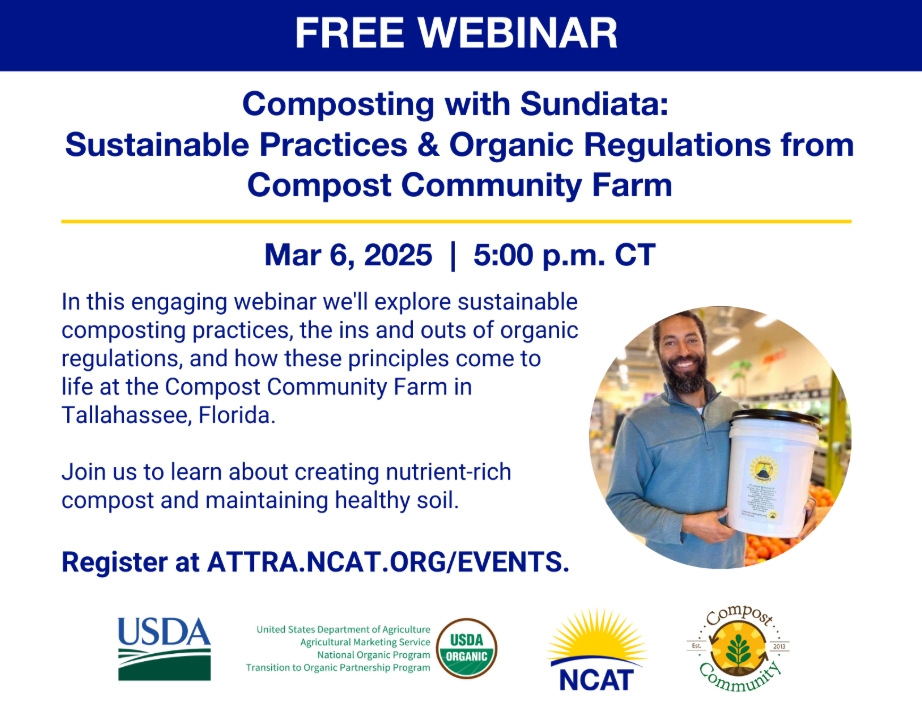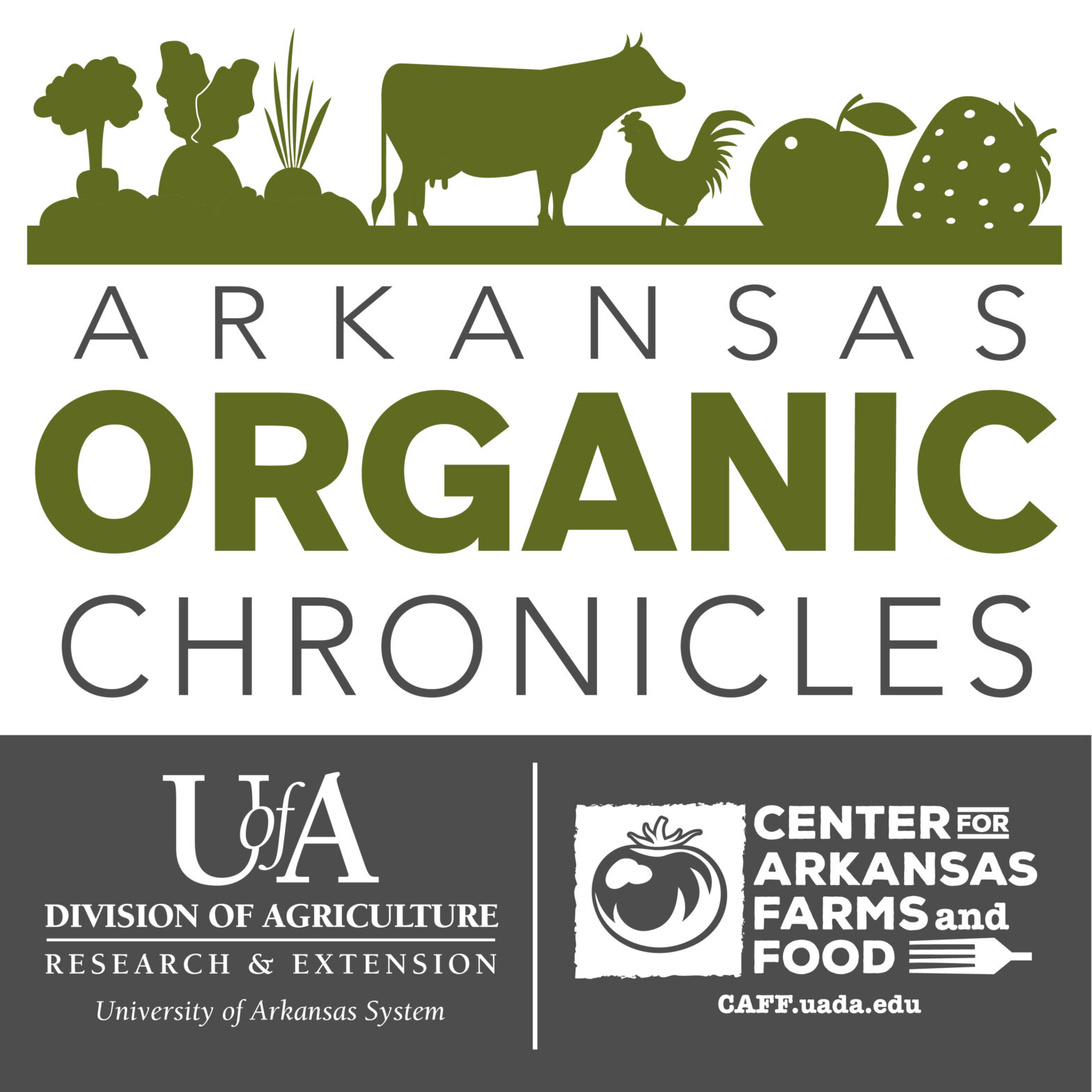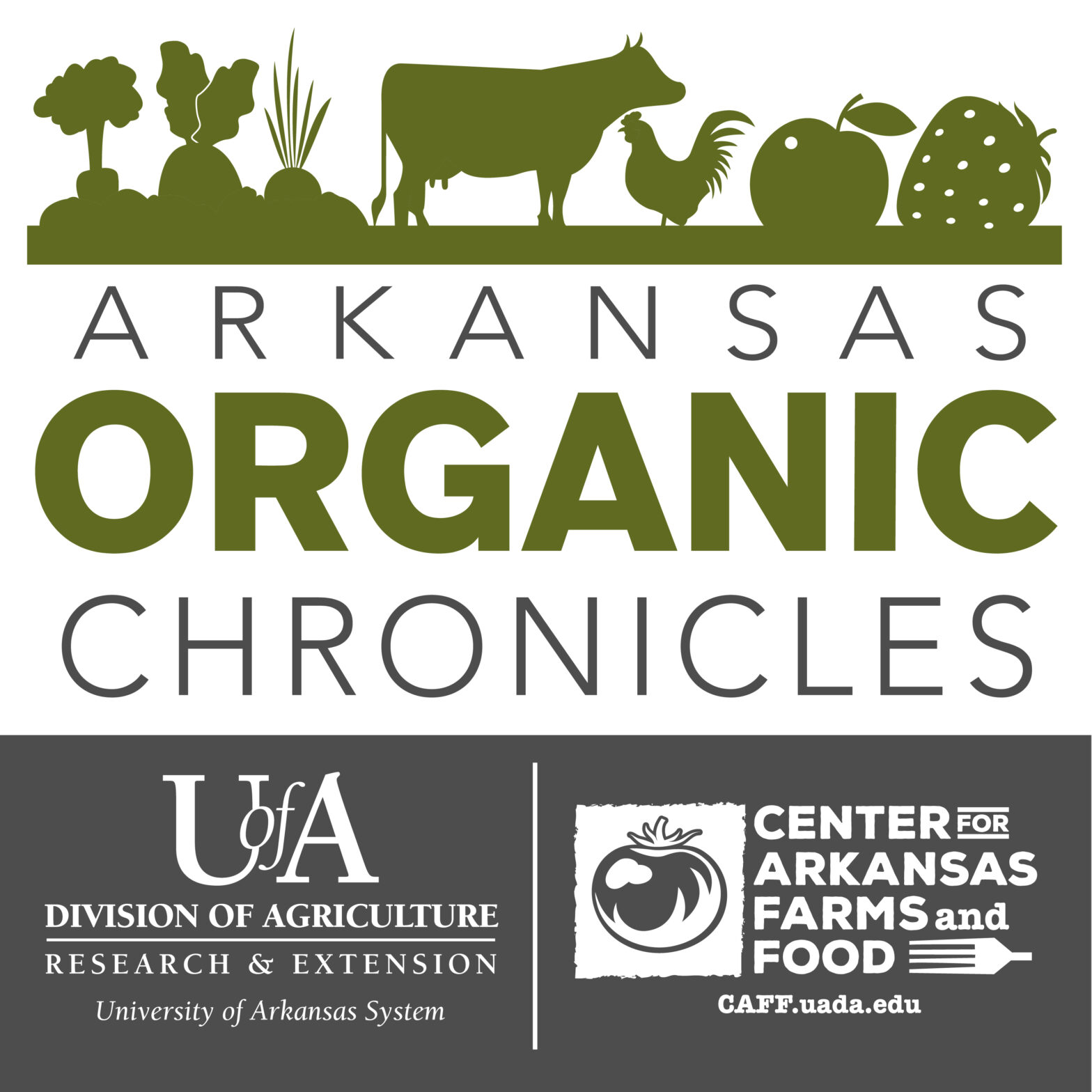In this webinar, NCAT Sustainable Agriculture Specialist Gabriella Soto-Velez teams up with Sundiata from Compost Community in Tallahassee, Florida, to dive deep into composting techniques, soil health, and the power of the soil-food web!
Resources Category: Organic Crop Production
Explore best practices in organic crop production. Get expert tips on soil management, crop rotation, and sustainable farming techniques to boost your organic yields.
Arkansas Organic Chronicles Podcast Live Q & A with Luke and Joe – Recordkeeping for Seeds & Transplants (Center for Arkansas Farms and Food)
Today we are talking about organic records for seeds and transplant media and talking cover crops.
Arkansas Organic Chronicles Podcast Live Q & A with Luke and Joe – Cover Crops & Nitrogen Sources (Center for Arkansas Farms and Food)
It’s March and Luke and Joe are back for another live episode! In this episode they talk about cover crops and supplemental nitrogen sources.
Arkansas Organic Chronicles Podcast Live Q & A with Luke and Joe – NWA Regional Farming Gathering (Center for Arkansas Farms and Food)
Arkansas Organic Chronicles podcast series – live Q & A discussion from NWA Regional Farming gathering with Luke and Joe from the Center for Arkansas Farms and Food.
Arkansas Organic Chronicles Podcast Live Q & A with Luke and Joe – Starting Seeds (Center for Arkansas Farms and Food)
Arkansas Organic Chronicles podcast series – live Q & A discussion about starting seeds with Luke and Joe from the Center for Arkansas Farms and Food.
Arkansas Organic Chronicles Podcast Live Q & A with Luke and Joe (Center for Arkansas Farms and Food)
Arkansas Organic Chronicles podcast series – live Q & A with Luke and Joe from the Center for Arkansas Farms and Food.
Putting Cover Crops to Work with Dr. Amanda McWhirt: Arkansas Grown Conference Session (Center for Arkansas Farms and Food)
Fruit & Vegetable Extension Specialist Dr. Amanda McWhirt @ARfruitveg provides an overview of how cover crops can be utilized on organic farms.
Field Notes: Talking Cultivation with Gary McDonald (The Land Connection-Illinois)
The Land Connection sat down with farmer, organic consultant, and educator Gary McDonald to talk cultivation.
Organic Seed Commons Network (Organic Seed Alliance)
Organic Seed Commons is a space for anyone engaged in seed work. Whether you’re a commercial seed producer, cultural seed keeper, on-farm plant breeder, university researcher, an experienced seed saver or just getting started.
Midwest Organic Seed Production Online Course (Organic Seed Alliance)
This self-paced, interactive course will explore the biological, technical, economic, and socio-political aspects of organic seed production.









